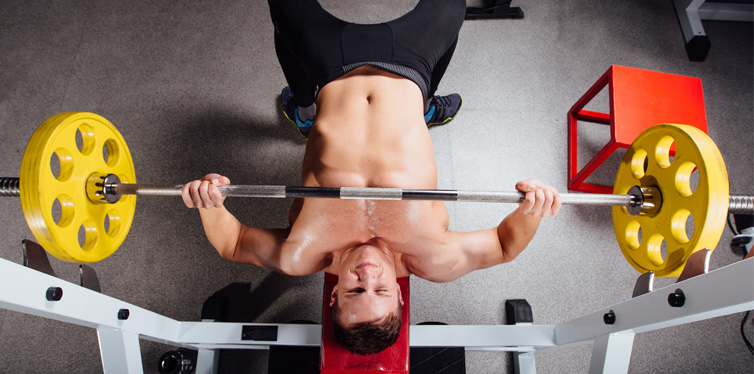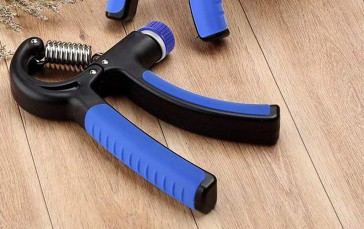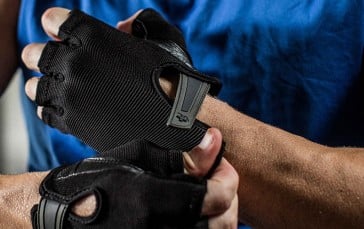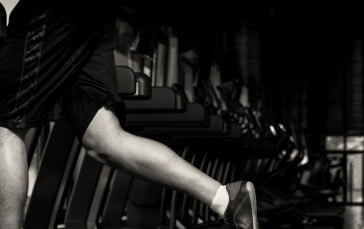Find The Perfect Weightlifting Grip
Not sure what to do with your hands? Whatever moves you come up with for your routine workout, when you are hitting the weights, even your grip plays a part. To work your triceps and biceps down to your lower back and just about every muscle in between, you can always try different grips. The grip that works best for you will depend mainly on your unique goals. Nevertheless, here are a few different grips to help you get various benefits.

1. Overhand Grip
The overhand grip is when your palms are facing away from you when you grab the barbell. It is usually used with back workouts including sit-ups, lat pulldowns or barbell rows and bicep workouts such as reversing curls.
The overhand grip is more flexible than the underhand and often referred to as the standard grip because it can be used for most movements, from bench presses and deadlifts to pull-ups. In some workouts, the overhand grip helps gain grip strength and improves the extensor muscles.
Using the overhand grip will allow you to target muscle groups that would not be stimulated as much with an underhand grip. During push-pull exercises, the overhand grip works on the forearm muscles and overall grip strength together. an overhand grip is, in general, expected for all push-pull movements, including squats and deadlifts, to make the most of the gains and prevent muscle imbalance. With deadlifts, you still might need to use a mixed grip to raise really heavy weights.
For other workouts, such as pull-ups or barbell rows, the strength helps to identify which muscle groups are working the most. Based on your priorities, you might want to change your grip from overhand to underhand to hit more core muscles in your back shoulders, forearms, and core.
2. Hook Grip
The hook grip is a way to hold the barbell by squeezing the thumb between the barbell and the surrounding fingers. It can be used in various weightlifting activities, such as a snatch. It’s used for power-lifting, for instance, in a deadlift. The hook grip has grown in popularity for a clear reason. It has distinct advantages over many other grips and by far, safety is the most important. Using a hook grip reduces tension from the biceps tendon and makes it very difficult to trigger a tear.
You will benefit from it because of the symmetrical pull that in turn makes you less vulnerable to uneven development in the traps, lats, and lower back. But if muscles are your main concern, or if you’re not into power-lifting, you can pull the straps to prevent grip and alignment issues.
On the downside, the hook grip can be too uncomfortable for some.

3. Suicide or Thumbless Grip
The suicide grip is used on barbells and dumbbells where you don’t curl your thumb around the bar as normal. With the suicide grip, four fingers are curled around the bar, and thumbs stay in their normal position loose next to the index finger.
Many people use the suicide grip for optimally positioning the bar when the bench is pushed. The bar lies in a safer position to push forward. But, as the name suggests, even with the slightest falter, a fall happens.
The barbell rests more securely in the palm of your hand during most of the suicide grip push, but any slight error in balance and you’re done. It is difficult to switch from a thumbless to normal or hook grip once the barbell begins to contort or slide although using the suicide grip is known to be effective.
The suicide grip drawback is that there is a significant risk of the barbell falling out of control. When placed below the bar, the thumb serves as a lock mechanism. Without the thumb, the barbell slips off the palm more rapidly. The danger is greater for powerlifters who use heavier loads to raise the bench. Any friction along the chain of the neck, which is almost bound to occur at high pressures, make it extremely difficult to hold the barbell on the base of the hand.
4. Underhand Grip
This is one of the lesser-used lifting grips although it’s commonly used in bicep workouts such as reverse grip chin-ups and barbell bicep curls. It can also be used to execute back workouts, like those of reverse grip barbell row and underhand lat pull down. The underhand grip’s drawback is that as you do the back workout, your biceps get active when you raise your weight.

5. Close Grip
With a close grip, you use completely different muscles. Close grip bench press minimizes the role of the shoulder and raises the tricep activity. Close grip lat pull down eliminates back and significantly increases bicep and wrist extender activity. The outer end of the bicep functions more than the short head.
6. Alternate Grips
The alternate grip is where one hand is underneath and one hand above. Generally, the stronger hand is on top. This position is primarily used for deadlifts and sometimes for chin-ups.
The majority of the time deciding which grip to use to pick up something is partly instinctive and partly learned from experience. But for workouts that focus on specific muscle groups even with care during positioning, if you are not using the right grip, you limiting the intensity of the workout. For sure, some like the hook or suicide grip are more complicated, but it’s worth having a bank of familiar grip to draw on to maximize your effort and progress.










